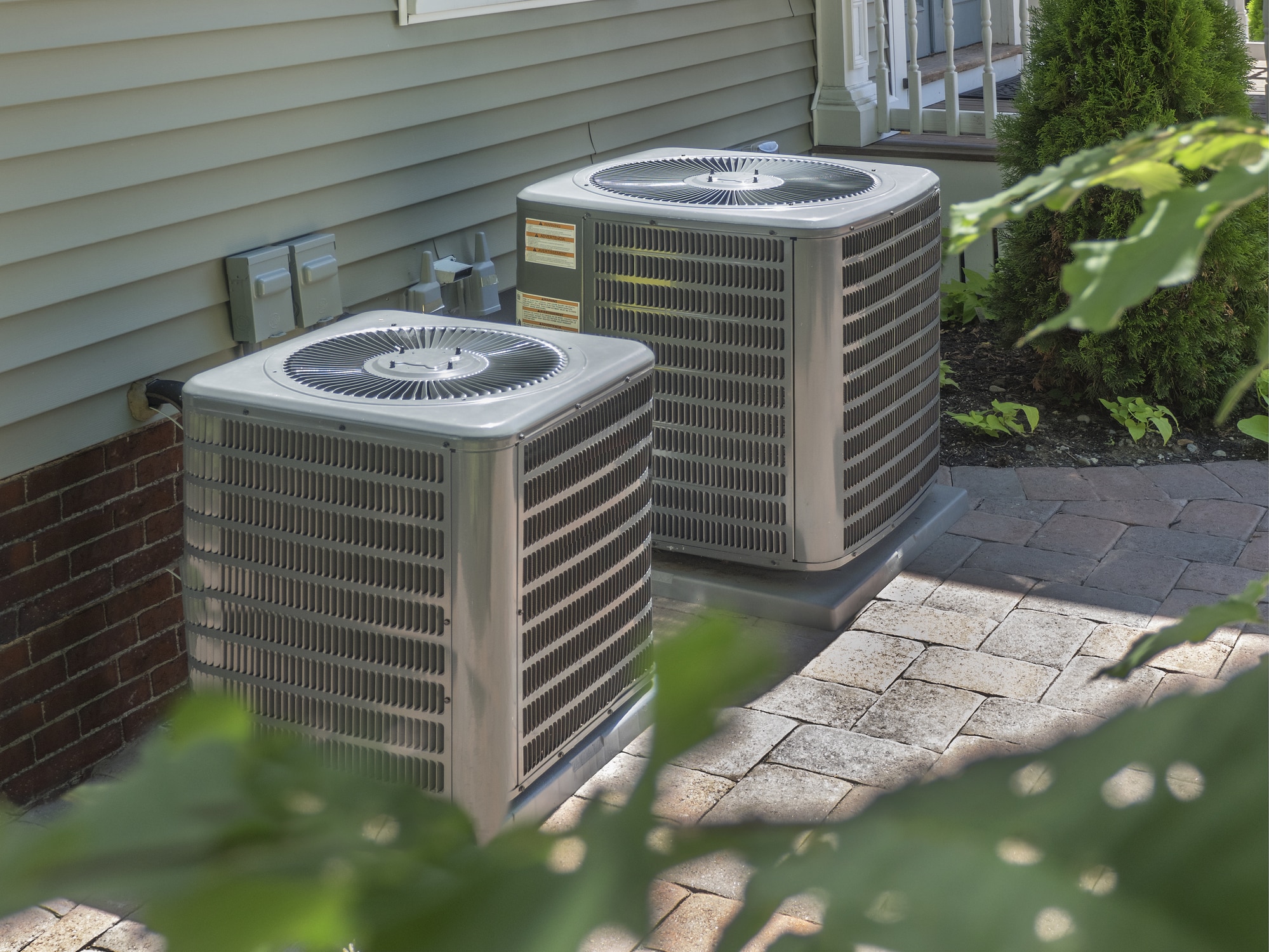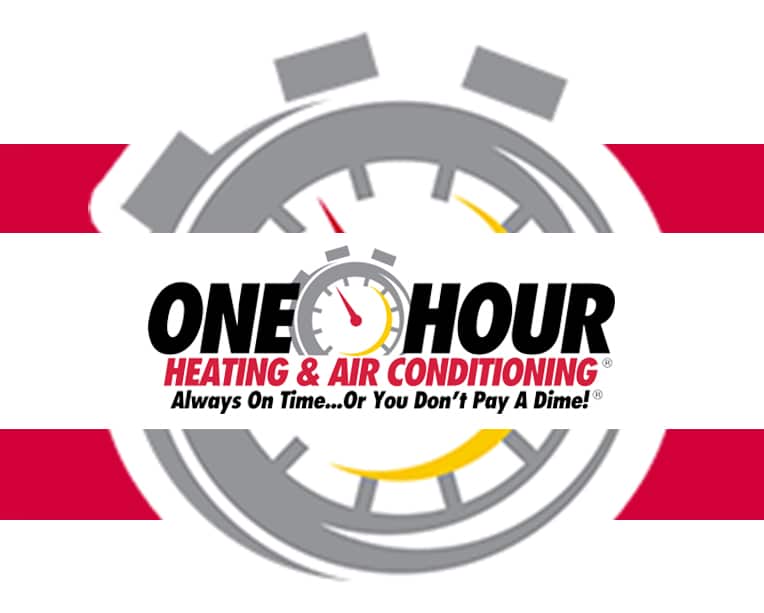Do you know why some rooms in your home feel like the Arctic, while others are more like a sauna? That’s where HVAC system zoning comes in! Zoning is a smart way to divide your home into different temperature-controlled areas, giving you more comfort and saving you money.
Imagine being able to keep your living room cozy while making sure your bedroom stays cool — all at the same time. Sounds great, right? In this guide, we’ll dive into everything you need to know about HVAC zoning and how it can transform your home’s comfort.
What is HVAC Zoning?
Some homes have rooms that never seem to reach the right temperature, no matter how you adjust the thermostat. HVAC system zoning helps by dividing your home into separate areas, each with its own thermostat for precise temperature control.
Instead of having one thermostat for the entire house, a zoned system lets you control the temperature in specific areas based on usage and preference.

Benefits of Zoning Your HVAC System
Improved Comfort
HVAC zoning allows you to maintain consistent temperatures throughout your home, eliminating those annoying hot or cold spots. Each zone can be set to the perfect temperature, so whether you like your bedroom cooler or your home office warmer, it’s all easily achievable.
This is especially helpful for larger homes where upstairs and downstairs areas often feel drastically different. By tailoring the comfort level in each zone, you can keep every room comfortable all day long. Ultimately, zoning ensures that your entire household is satisfied, no matter their temperature preferences.
Energy Efficiency
HVAC zoning helps reduce energy waste by allowing you to heat or cool only the areas of your home that are in use. Instead of running the system at full blast to reach one stubborn room, you can direct the air where it’s needed most.
This targeted approach means your HVAC system doesn’t have to work as hard, leading to lower energy bills. You can even set some zones to use less energy during certain times, like in guest rooms or areas that aren’t frequently occupied.
Over time, these small adjustments can result in significant savings and a more environmentally friendly home.
Customizable Temperature Control
One of the best features of an HVAC-zoned system is the ability to customize the temperature settings for each zone. With multiple thermostats, you can create personalized climates throughout your home, catering to everyone’s comfort needs.
For example, you can keep the kitchen cooler while making the living room warmer for family movie nights. This flexibility is perfect for accommodating different activities and times of the day, making it easier to manage comfort in every corner of your home. It’s all about having control and convenience right at your fingertips.
Key Components of HVAC Zoning
Zoning Dampers
Zoning dampers are essential parts that control the airflow in your ductwork, directing it to the appropriate zones as needed. Installed inside the ducts, these dampers open or close depending on the temperature settings for each zone.
This allows your HVAC system to focus its energy on heating or cooling specific areas rather than the entire house.
When a damper is closed, it prevents air from entering a particular zone, reducing energy consumption and preventing uneven temperatures. The smooth operation of zoning dampers is key to maintaining consistent comfort levels and maximizing efficiency.
Thermostats for Each Zone
Every zone in a zoned HVAC system needs its own thermostat to measure and control the temperature. These thermostats are connected to a central control panel, which coordinates the settings for all zones.
With separate thermostats, you can set different temperatures in each part of your home, so the kitchen can be kept cooler while bedrooms remain warmer.
This level of control not only boosts comfort but also allows for smarter energy management. Modern thermostats even offer programmable settings, letting you customize temperatures based on your schedule.
Control Systems and Integration
The control system acts as the brain of your HVAC zoning setup. It receives input from each zone’s thermostat and adjusts the zoning dampers accordingly. The control system ensures that each zone gets the right amount of heating or cooling, balancing energy use while maintaining comfort.
Many modern systems can be integrated with smart home technology, giving you remote access through apps or voice control. This makes it easy to manage your home’s climate from anywhere, adding convenience and flexibility to your HVAC system.
Signs Your Home Needs HVAC Zoning
Uneven Temperatures
One of the biggest signs that your home needs HVAC zoning is experiencing rooms that are consistently warmer or cooler than others. This is particularly common in multi-story homes or large floor plans, where heat naturally rises or rooms face different sun exposures.
For instance, your upstairs bedrooms might feel like a sauna, while the basement is freezing cold. Zoning allows you to target these trouble areas separately, ensuring each room reaches its ideal temperature. This means no more sweating in the living room while shivering in the kitchen!
High Energy Bills
If your energy bills have been steadily climbing despite normal usage, an inefficient HVAC system could be the culprit. Without zoning, your system has to work overtime to heat or cool the entire house just to get one or two rooms comfortable.
This constant cycling leads to higher energy consumption, which translates to higher costs. With a zoned system, you only use energy where and when it’s needed, resulting in more efficient heating and cooling. This way, you’ll notice a decrease in your energy bills without sacrificing comfort.
Overworking HVAC System
An HVAC system that seems to be running non-stop or struggles to reach the desired temperature might be overworked. This can happen when your system is trying to maintain a consistent temperature across multiple rooms with different needs.
Over time, this constant strain can lead to more frequent repairs and a shortened lifespan for your HVAC unit. Implementing zoning relieves this stress by allowing your system to operate in smaller sections, reducing wear and tear.
A zoned system distributes the workload more evenly, keeping your HVAC system healthy and efficient for longer.
How to Implement HVAC System Zoning
Assessing Your Home’s Layout
The first step in creating an HVAC zoning system is to assess your home’s layout. You’ll want to identify areas with unique heating and cooling needs, like bedrooms, basements, or sunrooms.
Pay attention to rooms that are often too hot or too cold, or that have different levels of sun exposure throughout the day. Multi-level homes or spaces with high ceilings typically benefit the most from zoning.
Once you have a clear picture of your home’s unique layout, it’s easier to determine how many zones you need and where to place them.
Choosing the Right Zoning System
Selecting the right zoning system is crucial for ensuring efficient operation and long-term satisfaction. There are various options, including traditional zoned ductwork systems, mini-split systems, and advanced smart systems that integrate with your home automation setup.
The choice largely depends on your home’s current HVAC setup, your budget, and your comfort goals. For existing homes, retrofitting with a ductless mini-split system might be the easiest option, while new builds have the flexibility to install more complex zoned ductwork. Consulting with a professional can help you choose the right system based on your specific needs.
Working with Professionals
Installing an HVAC zoning system is not a DIY project. It requires knowledge of HVAC systems, ductwork, and control systems to set up correctly. A professional HVAC technician can assess your home, recommend the best zoning options, and install the necessary components safely.
They will also ensure that all parts of your system are properly integrated and calibrated, so you don’t run into issues later on. Working with a licensed professional not only saves time but also guarantees that your zoning system will operate efficiently from day one.
Best Practices for Maintaining HVAC Zoning
Regular Inspections and Maintenance
Scheduling regular inspections with a professional technician is a must for keeping your HVAC System Zoning in top shape. These inspections typically include checking the dampers, thermostats, and control systems for any signs of wear or malfunction.
A technician will also ensure that the dampers are opening and closing correctly and that the control panel is responding to thermostat inputs.
Catching small issues early prevents costly repairs down the line and keeps your HVAC System Zoning functioning optimally. Aim to have your HVAC System Zoning inspected at least once a year, preferably before the start of a new season when your heating or cooling needs change.
Keeping Air Filters Clean
Clean air filters are crucial for maintaining good airflow and indoor air quality in an HVAC System Zoning setup. Dirty or clogged filters can restrict airflow, putting extra strain on your HVAC System Zoning and reducing its efficiency.
This can cause some zones to be cooler or warmer than desired, defeating the purpose of HVAC System Zoning. Regularly changing or cleaning the filters—typically every 1-3 months—will help keep the system operating smoothly.
If you have pets or allergies, consider checking them more frequently to ensure clean, unrestricted airflow in all your zones and to keep your HVAC System Zoning operating at its best.
Adjusting Zoning Based on Seasonal Changes
Your comfort needs change throughout the year, so it’s a good idea to adjust your HVAC System Zoning settings based on the season. During the summer, you might want to prioritize cooling upstairs bedrooms, while in the winter, keeping the basement warmer could be more important.
Adjusting the temperature settings and damper positions for each zone helps maintain consistent comfort and prevents the HVAC System Zoning from working harder than necessary.
Additionally, if your control system is programmable, set up seasonal schedules to automatically switch HVAC System Zoning settings as needed. Staying proactive with these adjustments ensures your HVAC System Zoning keeps your home comfortable and energy-efficient all year long.
Troubleshooting Common HVAC Zoning Issues
Inconsistent Temperatures Across Zones
One of the most frequent issues with HVAC System Zoning is having inconsistent temperatures across different zones. This can happen if the dampers aren’t functioning properly, if there’s a problem with the thermostats, or if the airflow isn’t balanced.
First, check each zone’s thermostat to ensure it’s set correctly and responding as expected. Next, inspect the dampers to see if they’re opening and closing as they should. If the problem persists, it may be due to uneven airflow, which could require adjusting the ductwork or balancing the system to restore uniform temperatures.
Unresponsive Thermostats
An unresponsive thermostat can throw off your entire HVAC System Zoning setup. If a thermostat isn’t registering changes or the display is blank, the first step is to check the batteries and replace them if needed.
For hardwired thermostats, look for any loose connections or wiring issues. If the thermostat still doesn’t work, try resetting it to see if that solves the problem. If the issue continues, it could indicate a malfunction in the control panel, which may need a professional to inspect and repair to get your HVAC System Zoning back on track.
Airflow Problems and Solutions
Airflow issues can lead to some zones feeling stuffy or not receiving enough conditioned air. This problem often stems from blockages in the ductwork, dirty air filters, or malfunctioning dampers.
Start by checking and replacing air filters, as clogged filters can severely restrict airflow. Next, inspect the dampers to ensure they’re fully opening and closing.
If these steps don’t resolve the issue, there might be a problem within the ductwork itself, such as blockages or leaks. In such cases, contacting an HVAC professional to assess and clean the ducts will ensure your HVAC System Zoning operates efficiently.
Common Mistakes to Avoid
Neglecting Maintenance
One of the biggest mistakes homeowners make is neglecting regular maintenance for their HVAC System Zoning. Over time, parts like dampers, thermostats, and air filters can wear down or become dirty, causing the system to function less efficiently.
Skipping routine check-ups can result in uneven temperatures, poor airflow, and higher energy bills. To avoid this, schedule annual inspections with an HVAC professional and regularly change air filters. Proper maintenance will keep your HVAC System Zoning system running at its best and extend its lifespan.
Incorrect Thermostat Settings
Setting the thermostats in your HVAC System Zoning incorrectly is a common oversight that can lead to discomfort and wasted energy. Some people mistakenly set all the thermostats to the same temperature, which defeats the purpose of zoning. Instead, adjust each zone’s thermostat according to how the space is used.
For instance, keep living areas cooler during the day and bedrooms cooler at night. Tailoring the settings based on activity and occupancy will help your HVAC System Zoning work more effectively, keeping each area comfortable and efficient.
Over-Zoning
While zoning is great for customizing comfort, adding too many zones can backfire. Over-zoning creates an overly complex system that’s difficult to manage and may put unnecessary strain on your HVAC unit.
When there are too many zones, the system’s workload increases as it tries to maintain various temperatures, leading to potential malfunctions and higher maintenance costs.
Stick to zoning only the key areas where you need specific temperature control, such as bedrooms, living areas, and home offices. Keeping it simple will ensure your HVAC System Zoning operates smoothly and efficiently.
Ready to Enhance Your Home’s Comfort?
Don’t settle for inconsistent temperatures in your San Diego home! At One Hour Heating & Air Conditioning San Diego, we specialize in creating custom HVAC System Zoning solutions that fit your unique needs.
Whether you’re dealing with uneven heating, high energy bills, or struggling to keep every room comfortable, our team is here to help optimize your home’s comfort with professional HVAC System Zoning services.
Call us today to schedule a consultation and experience the benefits of a perfectly zoned system designed just for you!

FAQs About HVAC System Zoning
How does HVAC zoning improve energy efficiency?
HVAC zoning improves energy efficiency by directing heating or cooling only to the areas that need it. This targeted approach prevents unnecessary energy usage in rooms that are unoccupied or rarely used.
Can I zone my existing HVAC system?
Yes, it’s possible to add zoning to an existing HVAC system, but the ease of installation will depend on your current setup. Retrofitting may require installing new ductwork, dampers, and thermostats, which can be complex. It’s best to consult a professional to evaluate your home and recommend the most cost-effective way to incorporate zoning.
What are the costs associated with HVAC zoning?
The cost of installing a zoned HVAC system varies depending on the number of zones, type of system, and complexity of the installation. On average, adding zoning to an existing system can range from a few hundred to a few thousand dollars.
How many zones should my home have?
The ideal number of zones depends on your home’s size, layout, and specific heating and cooling needs. Generally, a home will have 2-4 zones, but larger properties may require more. Each zone should represent an area with similar temperature needs or where occupancy patterns vary.
Are zoned systems difficult to maintain?
No, a zoned HVAC system is not necessarily more difficult to maintain than a standard system. Regular maintenance, such as inspecting dampers, checking thermostat settings, and changing air filters, is enough to keep it running smoothly.



















